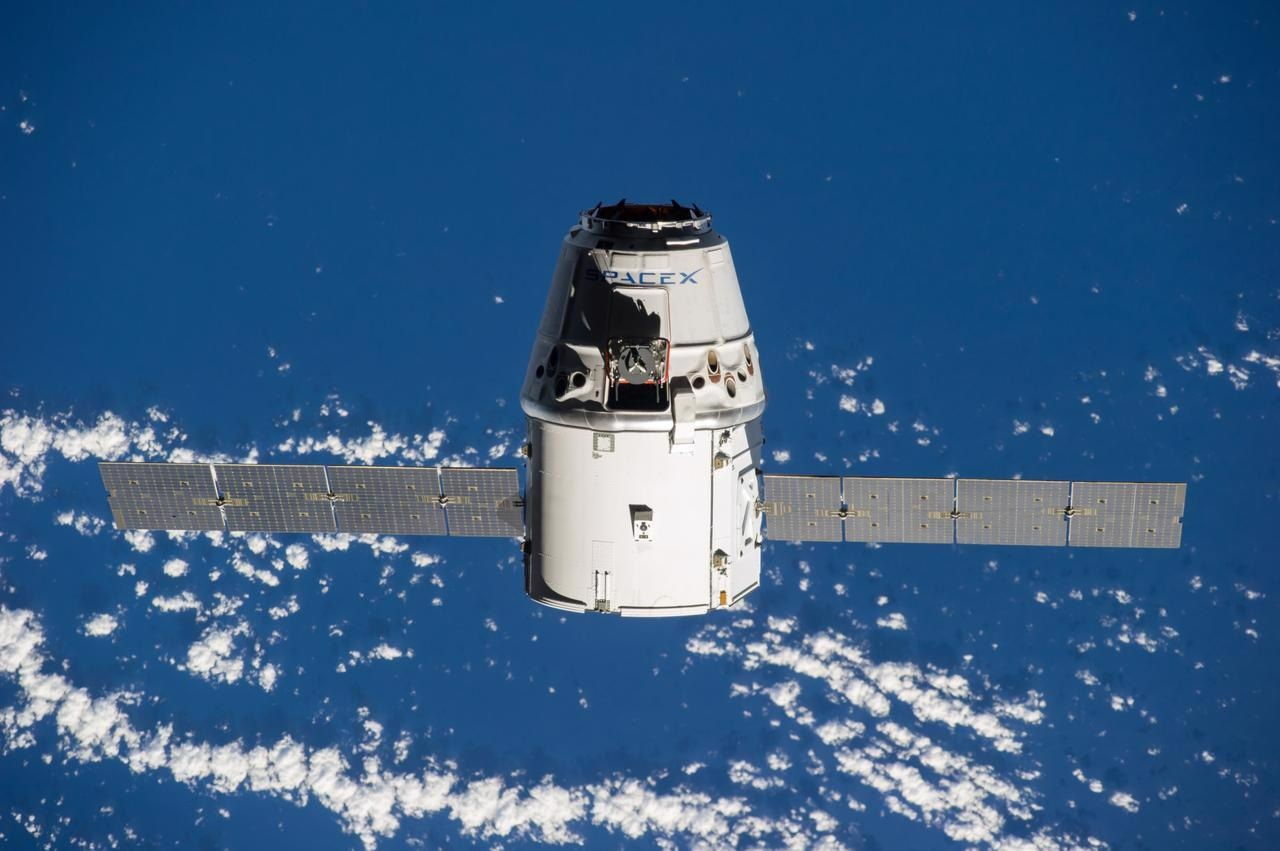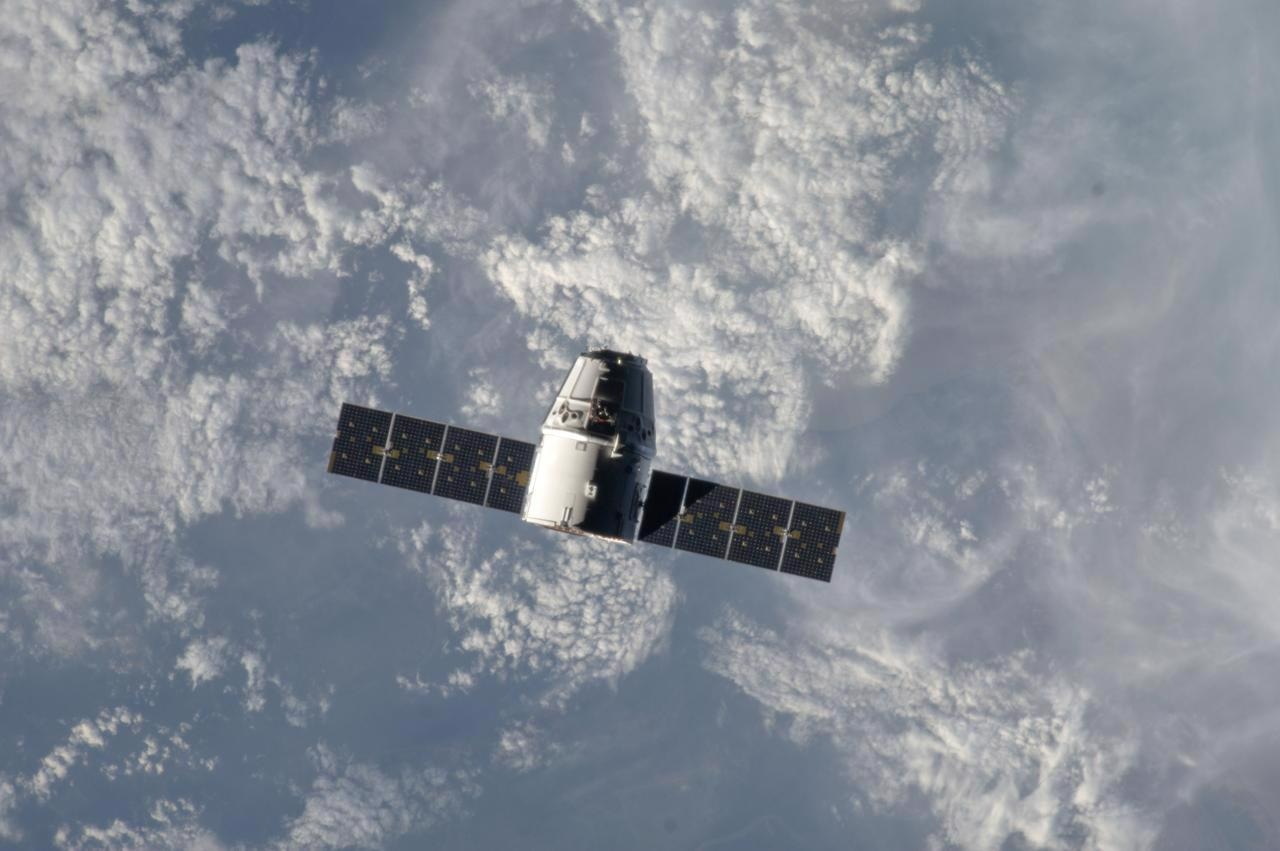SpaceX’s Cargo Dragon spacecraft, CRS24, has returned to earth carrying experimental data from a light microscope, samples from a colloidal study, and cellular signaling experiments conducted at the International Space Station (ISS).

Image Credit: NASA, Alex Gerst
Mission Brief
SpaceX Cargo Dragon spacecraft CRS24 returned to earth after a month in orbit. It splashed down off the Florida coast on the 24th of January 2022. This mission concluded SpaceX’s 24th trip to the ISS delivering cargo and experimental equipment for NASA.
Launched on December 21st, 2021, the SpaceX Cargo Dragon docked with the ISS on December 22nd. The spacecraft delivered an estimated 3 tons of cargo to the ISS. After 32 days in orbit aboard the ISS, the Cargo Dragon undocked from the ISS on January 23rd, 2022, and re-entered Earth’s atmosphere about 20 hours later. The spacecraft brought with it 2.2 tons of cargo from the ISS.
The return location near Florida facilitates the rapid transport of the spacecraft’s cargo to NASAs research facility. The proximity of the landing site to the research facility ensures that all the experimental samples collected from the ISS are transported with minimal exposure to environmental elements. NASA’s space station processing facility at the Kennedy Space Center distributes the experimental data to relevant research groups for analysis.
Three major scientific experimental data were returned on SpaceX’s Cargo Dragon spacecraft, CRS24. These are:
Last Light for LMM
The Light Microscopy Module (LMM) was launched to the ISS in 2009. The LMM is a state-of-the-art light imaging microscope that is sponsored by NASA’s Biological and Physical Sciences division. LMM provides a unique diagnostic platform to conduct experiments in microgravity.
Dynamics and organization of microscopic phenomena in matter can be observed and recorded with the LMM. Data can be acquired remotely and images and videos can be magnified for high-resolution investigations.
The behavior of colloids in microgravity was one objective the LMM was used for. Colloids are tiny particles that are suspended in liquid but are indissoluble. Results obtained from this study were instrumental in developing technology for detecting shifting sands on Mars.
The LMM also supported thermodynamics experiments and plant studies in microgravity.

Image Credit: NASA, JSC
Tiny Structures, Assemble
Another experiment returning from the ISS on the Cargo Dragon provides data on the studies of assembly of colloids in the presence of a magnetic field in a space environment. InSPACE-4, an acronym for Investigating the Structure of Paramagnetic Aggregates from Colloidal Ellipsoids, was launched to the ISS by scientists to study how colloidal structures affect mechanical responses and interactions with light and heat when suspended in other viscous matter.
Results obtained from InSPACE-4 are expected to provide insights into advancing manufacturing technology based on nanomaterials. For example, for applications such as sound damping devices, thermal shields, energy production, energy transfer, protection from micrometeorites as well as actuators and sensors for robotic and human missions.
The ISS provides the ideal microgravity test environment where large-scale colloidal phase separation processes can be carried out. Samples can be tested free of confining walls and sedimentation that would occur due to gravity on Earth.
Cell Signalling in Microgravity
The dynamics of the human cell respond differently in microgravity as compared to its functions on Earth’s surface. The Cargo Dragon is also retrieving information from a cell biological study named Cytoskeleton on its return. Cytoskeleton, a study commissioned by the European Space Agency (ESA), aims to observe how RhoGTPases change in vitro cell cultures when they are exposed to weightlessness.
RhoGTPases are molecules that function as molecular switches. RhoGTPases control cell proliferation, gene expression, and organization of the cytoskeleton. Cytoskeleton is the core framework of the cell that gives the cells its form and structure.
ESA analysis of Cytoskeleton is expected to advance the understanding of cellular function in space and on Earth. The results obtained will be a significant help in the development of future technology to monitor and optimize the health and performance of ISS crewmembers. Future medical research may also benefit from the evaluation of cell functionality in microgravity.
Future Missions
SpaceX started delivering cargo to the ISS nearly a decade ago with the Cargo Dragon spacecraft. This still remains the only mode of space transportation capable of moving large amounts of cargo to and from the ISS. The cargo transported includes non-scientific equipment like electronics and other types of hardware. There are several Cargo Dragon spacecraft missions scheduled until 2023.
Sierra Nevada Corporation (SNC) is another manufacturer designing a spacecraft for cargo delivery, return and disposal service for the ISS. SNC’s Dream Chaser is expected to launch sometime in 2022.
References and Further Reading
NASA. Getting to the Root of the Problem in Space | nasa.gov https://www.nasa.gov/ission_pages/station/research/news/petri_plants
NASA. Investigating the Structure of Paramagnetic Aggregates from Colloidal Ellipsoids | nasa.gov https://www.nasa.gov/mission_pages/station/research/experiments/explorer/Investigation.html?#id=7669
NASA. CYTOSKELETON | nasa.gov https://www.nasa.gov/mission_pages/station/research/experiments/explorer/Investigation.html?#id=1702
Disclaimer: The views expressed here are those of the author expressed in their private capacity and do not necessarily represent the views of AZoM.com Limited T/A AZoNetwork the owner and operator of this website. This disclaimer forms part of the Terms and conditions of use of this website.